Anisha has done MBA in Marketing from NMIMS And Executive Management(PMNO) from Harvard Business School. She has been instrumental in growing CATKing Digital with her experience with Marico and Henkel in the past.
GK- Sobriquets of India
In any competitive exam, you may find simple questions related to the States of India, their Sobriquets, and what are they famous for. It would be a good idea to go through some of these important facts so that you don’t miss out on the opportunity of scoring these easy few marks.
Also, in general, these are some simple and interesting facts that everyone should know. So read our article for a concise overview of the important facts about the Sobriquets of India.
Check Out: GK Questions and Answers - How to Read GK for Competitive exam?
List of Sobriquets
1) All Seasons State: Himachal Pradesh
Himachal situated in the heart of the western Himalayas is identified as "Dev Bhumi" and is believed to be the abode of Gods and Goddesses. The entire State is punctuated with stone as well as wood temples.
The shadowy valleys, rugged crags, glaciers, gigantic pines roaring rivers and exquisite flora and fauna compose the symphony that is forever Himachal.
2) Blue Mountains: Nilgiri
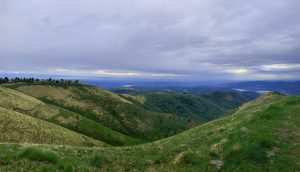
Situated in the Western Ghats, Nilgiri Hills are aptly called the 'Blue Mountains' for the bluish hue in their fine natural setting.
The place boasts some scenic landscapes, steep hills, rivers, and lakes that provide captivating scenery. The Hill stations here with their natural beauty and cheerful climate are sure to relax one's nerves.
3) City of Palaces: Calcutta
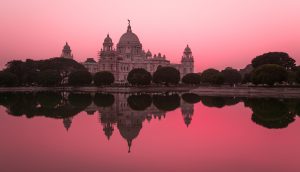
Kolkata is known as the City of Palaces because of the number of buildings built by the British Raj during the 19th century.
These buildings have been maintained to date, and act as architectural proofs of our country's rich history and struggle for freedom.
4) City of Golden Temple: Amritsar
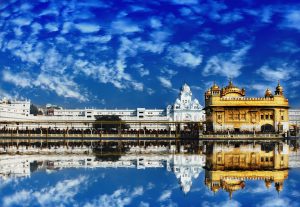
“Amritsar“, which literally means, a pool of nectar, is known as the city of the Golden Temple also which stands amidst a sacred water tank, from which the name of the city was derived.
The Golden Temple is one of the most sacred shrines in the world. Hence the city assumed much importance.
5) Garden City of India: Bangalore
Bangalore is the third-largest city in India and was once called “The Garden City” because of its many green spaces. Home to more than 12 million people it attracts 1.5 million tourists a year.
The city is filled with lush green parks, offering a respite from the stifling Indian heat. Bangalore developed a reputation as being a progressive, well-designed and green city.
6) Gateway of India: Mumbai
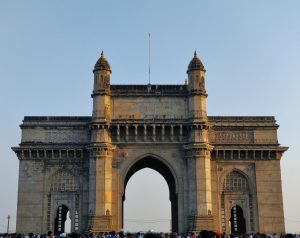
The "Gateway of India" is probably called so because it is the first sight welcoming, the eager eyes of visitors approaching Mumbai.
It was built to commemorate the visit of King George. V and Queen Mary, designed by George Wittet. And hence it is referred to as Gateway to India
7) Granary of India: Punjab
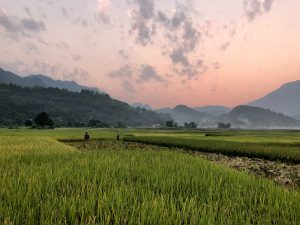
Punjab is called the “Granary of India” or “India's bread-basket”. Wheat is among the largest crops cultivated in Punjab and it contributes a larger amount to its economy. ... With this, the state has become one of the largest producers of Wheat and Rice
8) Land of Five Rivers: Punjab
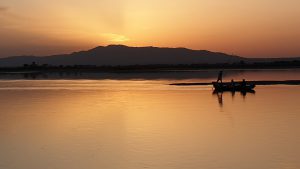
Punjab was originally called Sapta Sindhu, the Vedic land of the seven rivers flowing into the ocean. Punjab thus means "The Land of Five Waters", referring to the rivers Jhelum, Chenab, Ravi, Sutlej, and Beas. All are tributaries of the Indus River; the Sutlej being the largest.
9) Pearl of the Orient: Goa
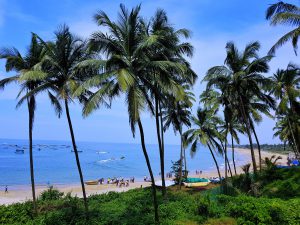
It is also called the “Pearl of the Orient” and has splendid natural beauty. Goa has magnificent leisurely beaches, whether you can attend an evening party or a party at night under star-studded skies with the breezes gently caressing you. Goa boasts of rich architectural remnants of the Portuguese past.
10) Pink City: Jaipur
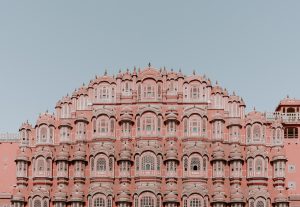
Jaipur, the capital of one of the most vibrant Indian states Rajasthan, is globally renowned as the Pink City. The popular story that goes behind it is that in 1876, to welcome the Prince of Wales and Queen Victoria, the city of Jaipur was painted in terracotta pink.
11) Lake City: Udaipur
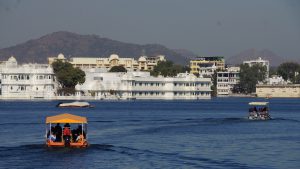
Udaipur is a famous historical destination. It is known for its history, culture and scenic location of Rajput – era palaces. The city is known as the city of lakes because of all of its natural lakes.
There are seven lakes surrounding the city. Five of the major lakes are Fateh Sagar Lake, Lake Pichola, Swaroop Sagar Lake, Rangsagar and Doodh Talai Lake.
12) Switzerland of India: Kashmir
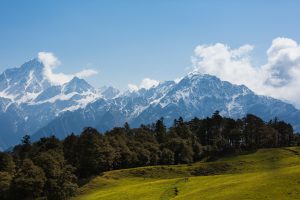
Nestled in the lap of the Himalayas, Kashmir is known as 'Paradise on Earth and Switzerland of India for its natural and picturesque landscapes.
It is one of the important regions of the northernmost Indian state of Jammu & Kashmir.
13) Paradise on Earth: Kashmir
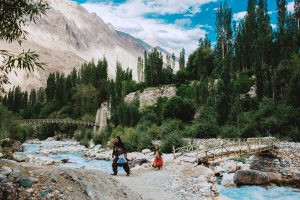
The Kashmir Valley is known as Paradise on earth. The name was coined by Emperor Jehangir and is reported to have said soulfully about Kashmir -" If there is paradise on Earth, it is here, it is here, it is here".
He was so enamoured with Kashmir that it is said that he visited it eight times during his reign.
14) Mini-Switzerland in India: Khajjiar (Himachal Pradesh)
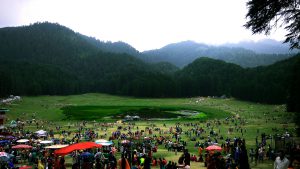
On July 7, the then Vice-Chancellor and Head of the Chancery of Switzerland in India, Willy Blazer, called Khajjiar the 'mini-Switzerland'.
The comparison came into his mind due to the striking topographical resemblance of the place with Switzerland.
15) The Sorrow of Bengal: River Damodar

The Damodar River is one of the important tributaries of the Bhagirathi – Hugli (Ganges) river system. As the river flows just in the opposite direction of rain-bearing monsoon wind, devastating floods were regular occurrences for which the river was infamously called the 'Sorrow of Bengal'.
Also read: List of National parks in India
16) The Sorrow of Bihar: River Kosi

The Koshi River is known as the "Sorrow of Bihar" as the annual floods affect about 21,000 km2 of fertile agricultural lands thereby disturbing the rural economy.
Its unstable nature has been attributed to the heavy silt it carries during the monsoon season and flooding in India has extreme effects.
17) The sorrow of Assam: Brahmaputra

The Brahmaputra flows through Assam and originated from Tibet, which causes floods in this region during every season of summer which comes with heavy destruction and detriment.
18) Spice Garden of India: Kerala
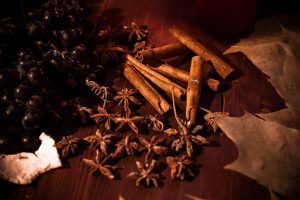
Kerala is called the 'spice garden of India' because of the variety of spices it delivers to the nation. Kerala is one of the southernmost states of India. It is world-famous for its spices.
It has several spice gardens all throughout the state. Kerala is an important spice market in the country. Apart from being a commodity, the spice industry is also an important tourism element.
19) Sugar Bowl of India: Uttar Pradesh
Uttar Pradesh is known as the sugar bowl of India, being the largest producer of sugar in India. UP has a large area for the cultivation of sugarcane thus, resulting in being the largest state to produce sugar.
20) Tea Garden of India: Assam

Sprawling over hundreds of acres of land, the tea gardens of Assam are playing a significant role in its economy. Assam is the world's second commercial tea-producing centre after China.
Assam is the black tea which derived its name from the name of the area of its production, Assam.
21)Detroit of India: Pithampur
'Pithampur' located in the 'Dhar' district of Madhya Pradesh is called Detroit of Madhya Pradesh on account of the large number of manufacturing industries located here.
It has also been, declared a Special Economic Zone (SEZ) of Pithampur in Madhya Pradesh.
22)Land of Sunrise in India: Arunachal Pradesh
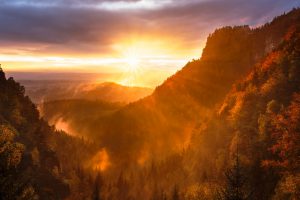
Arunachal Pradesh is located in the northeastern part of the country. The state shares its border with Assam and Nagaland and also with Bhutan, Myanmar, and China.
Being the easternmost State of India and it receives the first Sun rays in India thus called the "Land of Sunrise".
23) Manchester of South India: Coimbatore

Coimbatore is known as the Manchester of South India or the Textile Capital of South India. It is known as such because of the presence of more than 25,000 small, medium, and large-scale industries, and textile mills.
24) Manchestor of India: Ahamadabad

Ahmedabad is called Manchester of India because of its similarity with the famous cotton textile centre of Manchester, Great Britain. ... Just like Manchester, Ahmedabad in India is situated on the bank of the Sabarmati River. Its water is good for dying thread. The climatic condition is also suitable for spinning fine thread.
25) City of Orange: Nagpur
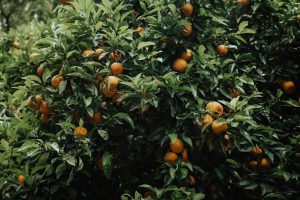
Nagpur is famous throughout the country as “Orange City” for being a major trade centre of oranges that are cultivated in the region.
Nagpur is also called, the “Tiger Capital of India ” as it connects many Tiger Reserves in India to the world.
26) Weavers city of India: Panipat

Panipat is nicknamed the City of Weavers in India because thousands of weavers have made their living here, in the most extensive handbook and shoddy yarn industry of the country.
Panipat manufactures and exports fabrics, blankets, mats, rugs, carpets, and other items throughout the country and even abroad.
27) Silicon Valley of India: Banglore
Bengaluru is widely regarded as the "Silicon Valley of India" (or "IT capital of India") because of its role as the nation's leading information technology (IT) exporter.
Indian technological organizations such as ISRO, Infosys, Wipro, and HAL are headquartered in the city.
28) Abode of Clouds: Meghalaya
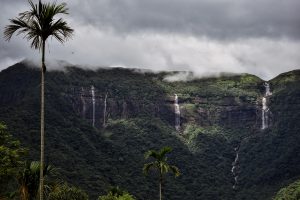
Literally known as 'the abode of clouds, Meghalaya is a hilly state landlocked between Assam and Bangladesh, abounding breathtaking scenic beauty coupled with a bracing climate.
But it's the diverse cultural heritage and distinctive features of its tribal community life that bear the testimony of unity in diversity.
29) God's own land of India: Kerala
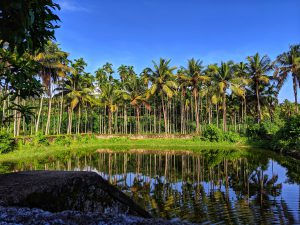
According to Hindu mythology, Kerala was created by Lord Parasurama, an incarnation of Lord Vishnu by throwing his axe across the sea to create new land for his devotees to live peacefully. So, Kerala is God's own creation, hence it is called God's own country!
30) Hollywood of India: Mumbai

Mumbai, apart from being the Economic Capital of India, the city is also known as the "Hollywood of India". Mumbai also has a large number of cinema halls that feature Bollywood, Marathi and Hollywood movies. In India, cinema is more than art; it inspires locals who identify themselves with the actors. It happens that groupies wait hours in the sun in front of “the houses of stars” in the upscale area of Bandar, in the north of Mumbai.
Check Out: How to prepare for GK? (Most important GK topics- Get access to dashboard)
Also Read:
5 Things Freshers must do before MBA ft. Tarun Anand, (Ex MD & CEO Thomson Reuters, UBS Mumbai)



Comments are disabled for now